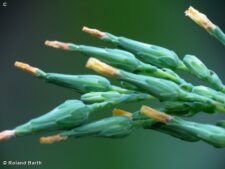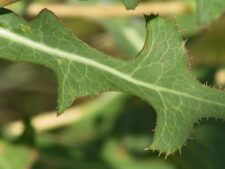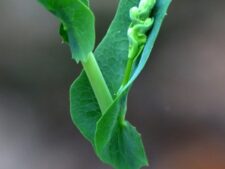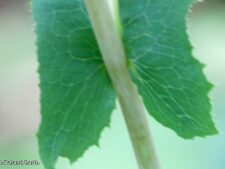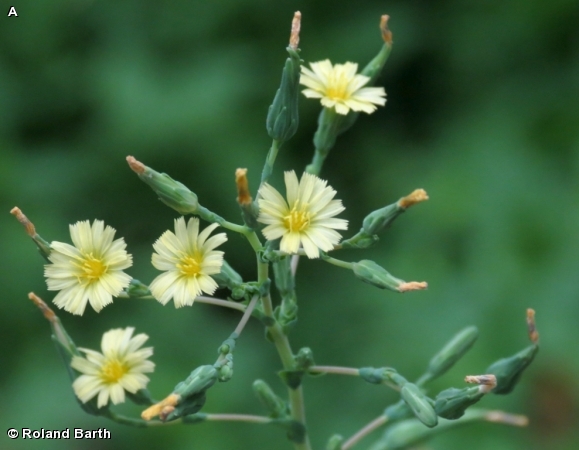
PRICKLY LETTUCE
Lactuca serriola
SUNFLOWER FAMILY (Asteraceae)
 Identification
Identification
- Flowering time - July, August, September
- Uncommon in disturbed areas at both FF and NW
- Small, pale yellow dandelion-like flowers with fewer than 20 ray florets
- Clasping leaves with prickles on margins and underside of central vein
- See comments for comparison with the Sow-thistles (Sonchus sp)
This naturalized winter annual was introduced from Europe. This erect plant, up to 5 feet tall, usually has lobed leaves which clasp the erect stems and branches (D,E) and prickles along the leaf edges and underside of the central vein (C). Stem and leaves exude a milky latex when cut. Flower heads up to about 1/2 inch across, are arranged in loose clusters (panicles) at the ends of the branches. Each flower has up to 20 strap-like ray florets with squared-off, finely toothed tips (A). The seeds develop into a symmetrical “wheel of parachutes”, the attached hairs facilitating wind dispersal (F).
Uncommon in disturbed areas and along roadsides at FF and NW, flowering from July through September.
Prickly Lettuce has lobed, clasping leaves with prickly margins and milky latex similar to the Sow-thistles (Sonchus oleraceus and S. asper). Unlike the Sow-thistles, its leaves also have sharp prickles on the underside of the central vein and flowers are smaller and pale yellow with fewer, more strap-like ray florets. Most of our Lettuce species are easily separated because they have blue flowers. An exception is Canada Wild Lettuce (Lactuca canadensis) which also has pale yellow flowers, but is a larger, more robust plant and the prickles on the underside of the leaf are softer, less numerous or absent.
Considered the ancestor of our garden lettuce. Other common names include Milk Thistle, Wild Opium and Horse Thistle.
The content of NatureSearch is provided by dedicated volunteer Naturalists of Fontenelle Forest who strive to provide the most accurate information available. Contributors of the images retain their copyrights. The point of contact for this page is: Roland Barth.

